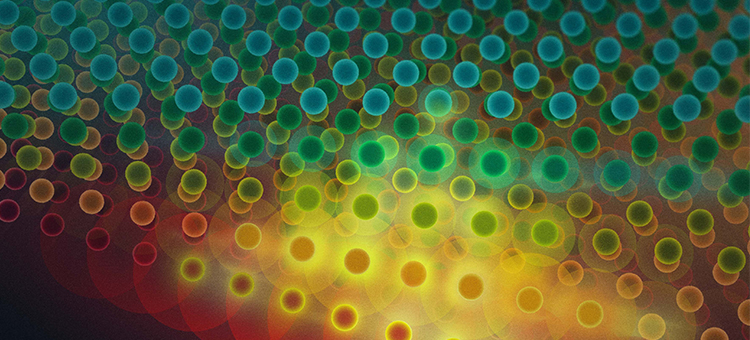
Heat is generated whenever you are using an electronic product, but too much heat can create environments with heat clusters that may damage or wear out sensitive parts, such as the battery. Controlling heat flow at the microscopic level and below, is one of the great challenges of engineering. Researchers have now come up with a super-thin material that is extremely good at both containing heat and moving it, albeit in different directions – which could have very useful applications in electronics and other technology, writes Chalmers University of Technology in a press release.
The research, which was recently presented in an article in the scientific journal Nature, is a collaboration between researchers at the University of Chicago, Chalmers University of Technology, the University of Illinois at Urbana-Champaign and Cornell University.
The researchers at the University of Chicago have created a material, less than ten nanometers in thickness, which consists of ultra-thin crystalline layers stacked in random fashion on top of each other. Usually, materials in electronics consist of regular, repeating lattices of atoms which makes it very easy for electricity (and heat) to move through the material. But in the material that the researchers examined here, each sheet is slightly rotated, much as if you were carelessly stacking lasagna sheets into a pile. As a result, the heat flow between the layers is hindered, while the heat flow within the layers remains high.
Containing and moving heat in different directions
This stacking technique provides a material that is extremely good at containing heat and moving it in different directions – an unusual ability at the microscale.
“Usually two materials are required: one that conducts heat and one that insulates from heat. This material does both at the same time. On one side of the material the heat is spread unhindered, on the other side it is cool. This material has the highest ratio of conductivity in different directions of any known material,” says Paul Erhart, Professor at the Department of Physics at Chalmers University of Technology, and one of the lead authors of the article.
And while the material is powerful, it is also extremely thin. Thus, the material could, for example, be used for protecting batteries or microchips from overheating by conducting heat away from them, while at the same time not taking up space in the product – an advantage as such components become smaller and smaller. The material could also be used for high-performing computer chips, as it would allow for the components to be run at a higher electrical current.
Created a computer model of the material
The focus of the research group at Chalmers has been on explaining why the material behaves as it does and giving suggestions for different kinds of changes to improve the materials properties. This has been done by creating a computer model of the material, in which simulations and observations are performed.
“The model is a kind of super microscope where you can observe each atom separately; how they behave and how they move towards each other on a microscopic scale. What we suggest after these observations is the basis for various experiments that were performed,” says Paul Erhart.
Opens doors to experiment with heat-sensitive materials
The material that the researchers studied is made of molybdenum disulfide, but they suggest the technique could be applied to other 2D materials as well. The findings of the research could open doors to experiment with materials that have been too heat-sensitive for engineers to use in electronics.
“The combination of excellent heat conductivity in one direction and excellent insulation in the other direction does not exist at all in nature,” says Jiwoong Park, lead author of the study and Professor of chemistry and molecular technology at the University of Chicago. “I hope this opens up a whole new direction for making exotic thermal conductors.”
Also interesting: A smart tank as a cool way to store heat
Selected for you!
Innovation Origins is the European platform for innovation news. In addition to the many reports from our own editors in 15 European countries, we select the most important press releases from reliable sources. This way you can stay up to date on what is happening in the world of innovation. Are you or do you know an organization that should not be missing from our list of selected sources? Then report to our editorial team.




